Sart Duen Sip: A Feast for the Dead
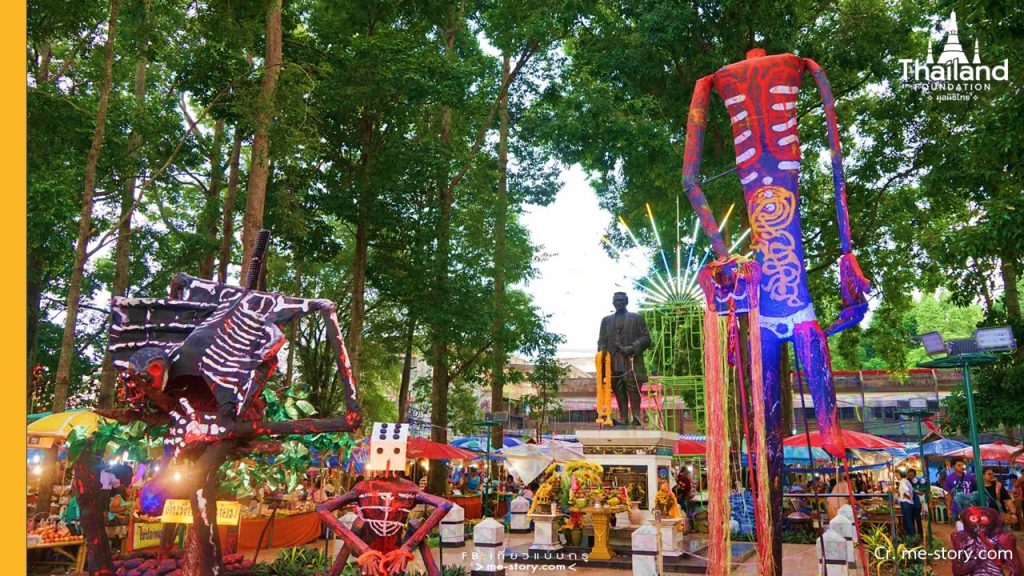
The belief that the world of the living and the world of the dead exists in parallel is a part of many cultures around the world, and when the gate between the two worlds opens, festivals and ceremonies will be held in the world of the living to welcome the spirits of the deceased who return for a visit. We may be familiar with Halloween of the Western cultures, Dia de los Muertos of Mexico, Qingming of China, and Obon of Japan. In Thailand, we have a tradition of Sart Duen Sip (สารทเดือนสิบ), the time when families from the two worlds reunite and those who are still alive will show their love and gratitude to those who passed away.
What is Sart Duen Sip?
Sart Duen Sip literally means the festival of the tenth month, in which Sart (สารท) is the word for festival, Duen (เดือน) for month, and Sip (สิบ) for ten. In this context, the tenth month is not October as in the solar calendar, but a lunar month, which is determined by the lunar phases. Therefore, the period of the tenth month varies slightly each year, but always overlaps between August and October. The day of the festival strictly falls on the 15th night of the waning moon in the tenth month. This tradition originated in Southern Thailand. In essence, Sart Duen Sip is one of the many merit-making traditions of the Buddhist society, but what sets this tradition apart is the beneficiaries who are “pretas” returning briefly from hell.
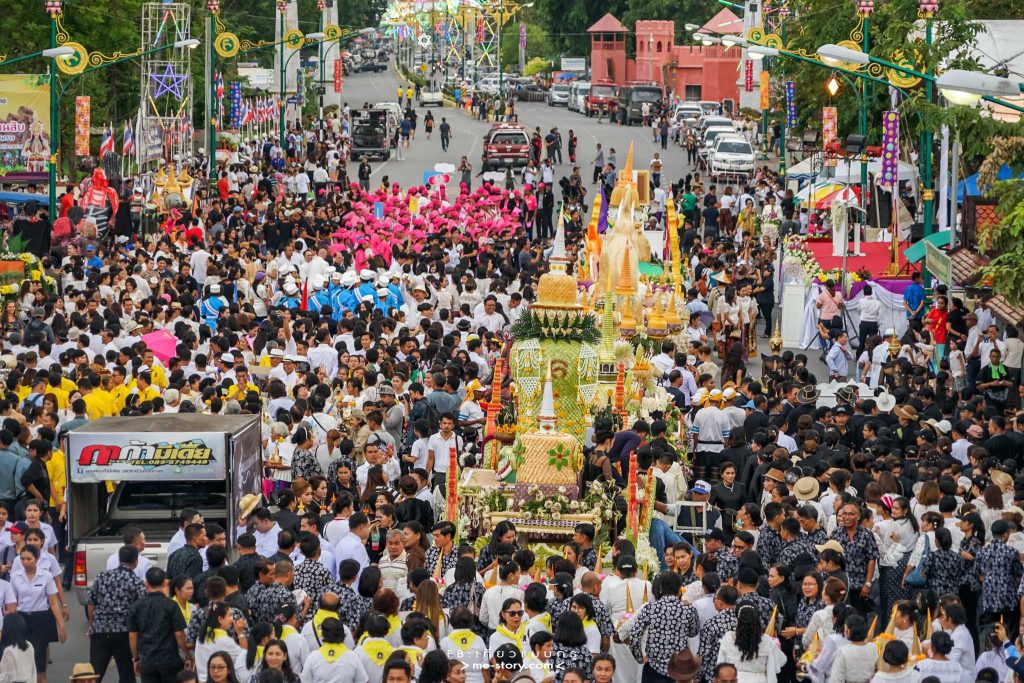 (Photo Credit: me-story.com)
(Photo Credit: me-story.com)
Belief about the pretas and their visit to the world of the living
A Buddhist belief says that people who have committed good deeds while they are alive will spend their time after death in heaven, but if they commit bad deeds, they will be destined to hell and become pretas [เปรต] or hungry ghosts. A preta is a monster as tall as a palm tree, having long hair, a long neck, a big stomach, hands as large as palm leaves, but a mouth as small as a needle hole. Pretas look like walking bones and are always hungry because no food can pass through the tiny needle holes of their mouths. When there are merit-making events, they will come to ask for merits in order to be reborn and end their suffering in hell. Merits devoted by the living are the only substance that nourishes the pretas while paying for their bad karmas in the abyss, but on the first day of the tenth month, these sinners will be temporarily released as the gate between the two worlds is open. They will return to the living world to reap the merits from their families before heading back to the dungeon hell. On this occasion, people who wish to express their gratitude to their deceased relatives and help release them in case they might be suffering in hell will bring food to the temple and observe the tradition of Sart Duen Sip. There is also a belief that any good deeds or merits committed on this day will be fully received by the deceased who will have a higher chance of paying off their karmic debts and be reborn.
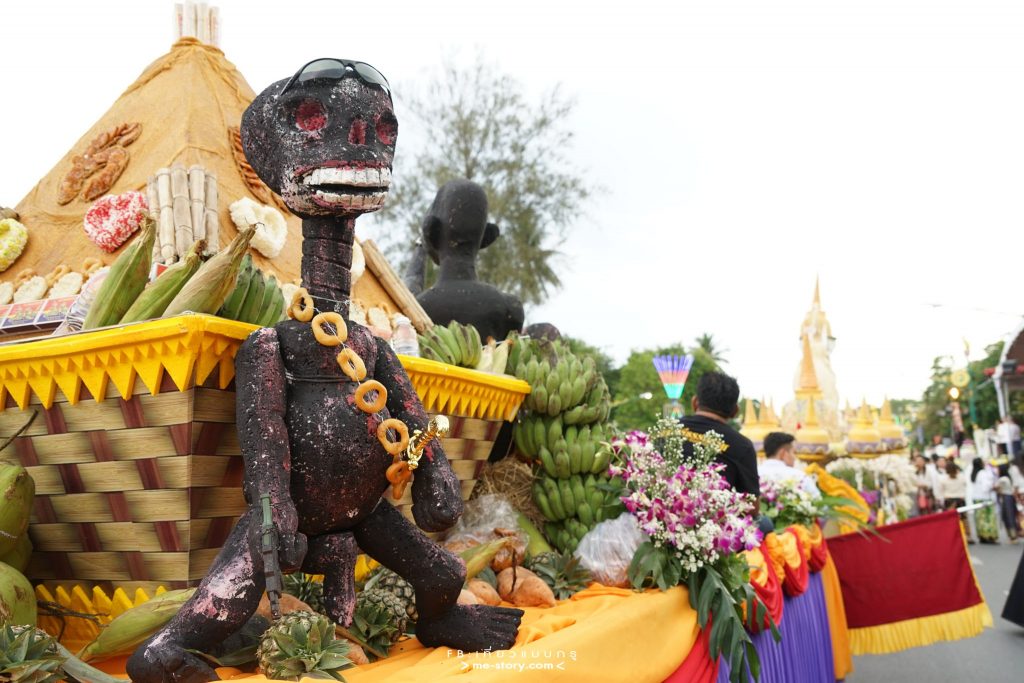
(Photo Credit: me-story.com)
The Ritual
The merit making ritual of Sart Duen Sip consists of three steps and lasts three days, as follows:
- Arranging the “Hmu Rub” on the 13th night of the waning moon
“Hmu Rub” [หมุรับ] has the same meaning as “samrub” in the central Thai dialect, which means a set meal. On this day, the market will be crowded with people shopping food to be arranged in hmus. Arraning a hmu is a family activity, and it can be as large or small depending on to whom it will be given to. The container for a hmu is usually a basket or tray made of woven bamboo.
Some families may prepare a special hmu rub known as “Hmu Lek” or a small hmu and set a separate date for handing it over to the souls of deceased grandparents. We call this day “Grandparents’ Welcoming Day”.
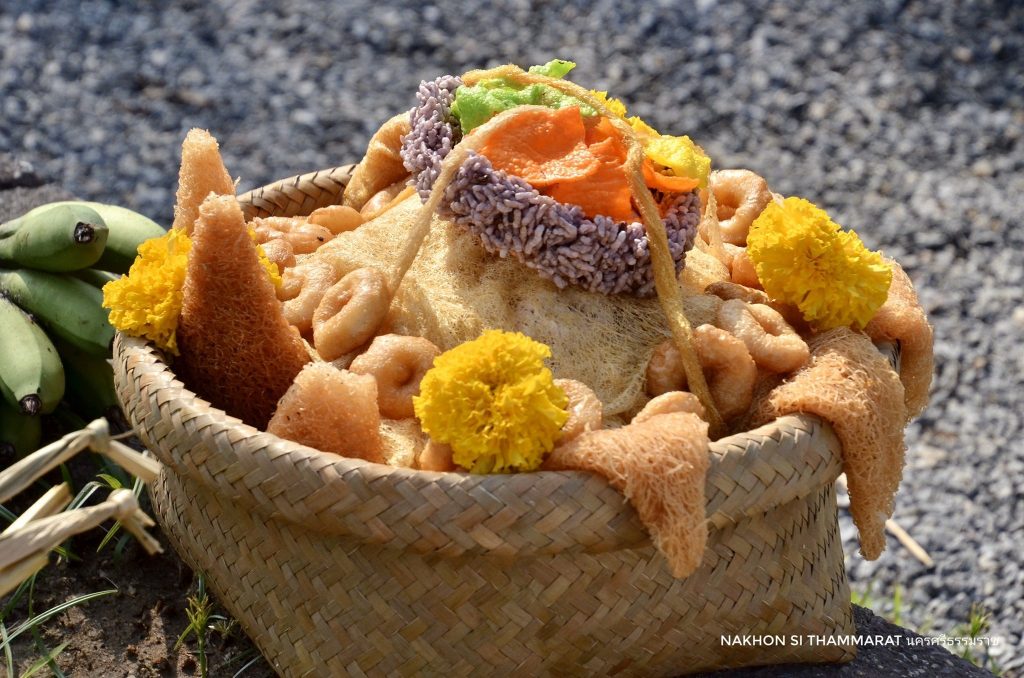
(Photo Credit: WU Library)
- Offering the “Hmu Rub” on the 14th night of the waning moon
On this day, the living family members will come together to carry the prepared hmus to the temple and offer them to the monks. People in the same village may organize a parade along the path to the temple to add a merry atmosphere to the tradition.
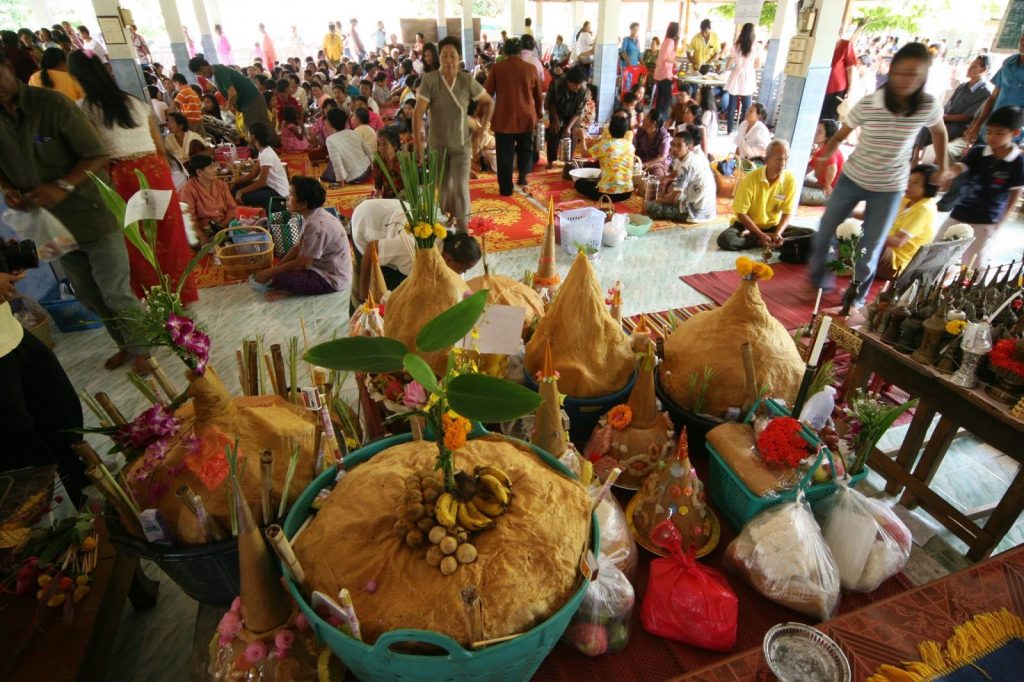
(Photo Credit: bee6002880)
- Celebrating the “Hmu Rub” on the 15th night of the waning moon
Today’s main event is to send the ghosts of the suffering relatives on their way back to hell. The celebration of hmu rubs consists of offering food to the monks and the ceremony of funeral robes offering. It is believed that if the ritual is not performed on this day, the deceased ancestors will not receive any merit and the living descendants will be considered unfilial.
Ching Pret (Fighting for food offered to pretas)
After the celebration of hmu rubs and the funeral robes offering are concluded, people like to put spare sweets at different locations in the temple area, or at the roots of big trees, or on the temple walls. This practice is called “Tang Pret” which means to present food offerings to pretas without family. In some temples, a scaffolding called “Sala Pret” (a pavilion for pretas) is built for specifically this activity. A holy thread will be tied to the pavilion to transfer the merit from the temple to familyless pretas.
After the Buddhist ceremony in the church is finished and the holy thread is lifted off the pavilion. The next activity is “Ching Pret” or to fight for food offered to pretas. Adults and children alike will be running to the pavilion and fighting for the sweets, believing that eating leftovers from the offerings will give them a large amount of merits and bring prosperity to themselves and families. Some temples build a scaffolding on a single, high and slippery pillar, making it more challenging to ching pret. Many would fall from the pillar because it is slippery or because other competitors pull them down. These added hurdles mean that it requires more effort to climb the pillar, thus more fun and exciting.
Snacks of the festival
Snacks play an important role as offerings to the dead. Each of the snacks symbolizes different “gifts” for the dead, who are suffering from harsh conditions in hell.
- Krayasart (กระยาสารท) is the festival’s most popular sweet and can be found in all regions of Thailand. Krayasart is a Thai sweet rice bar made of popped rice, nuts, sesame seeds, and sugar. This dessert is often prepared for Buddhist festivities.
- Khanom Phong (ขนมพอง) is also made of popped rice. It is light enough to float on water and has a large disc shape, therefore symbolizing boats or rafts that the deceased use to cross the great river of the afterlife.
- Khanom La (ขนมลา) symbolizes clothing because it is shaped like woven cloth that can be folded or separated into several pieces. Locals also believe that the tiny “threads” of the sweet can also easily pass through the tiny mouths of the pretas.
- Khanom Ba (ขนมบ้า) symbolizes a traditional spinning top called Look Saba (ลูกสะบ้า), which was a popular toy in the old days.
- Khanom Deesum (ขนมดีซำ) symbolizes money for its resemblance to money cowry. People make merit with this snack so that their deceased relatives can have pocket money to spend in the afterlife.
- Khanom Kong (ขนมกง) symbolizes jewelry because of its small circular shape like a bracelet or a ring.
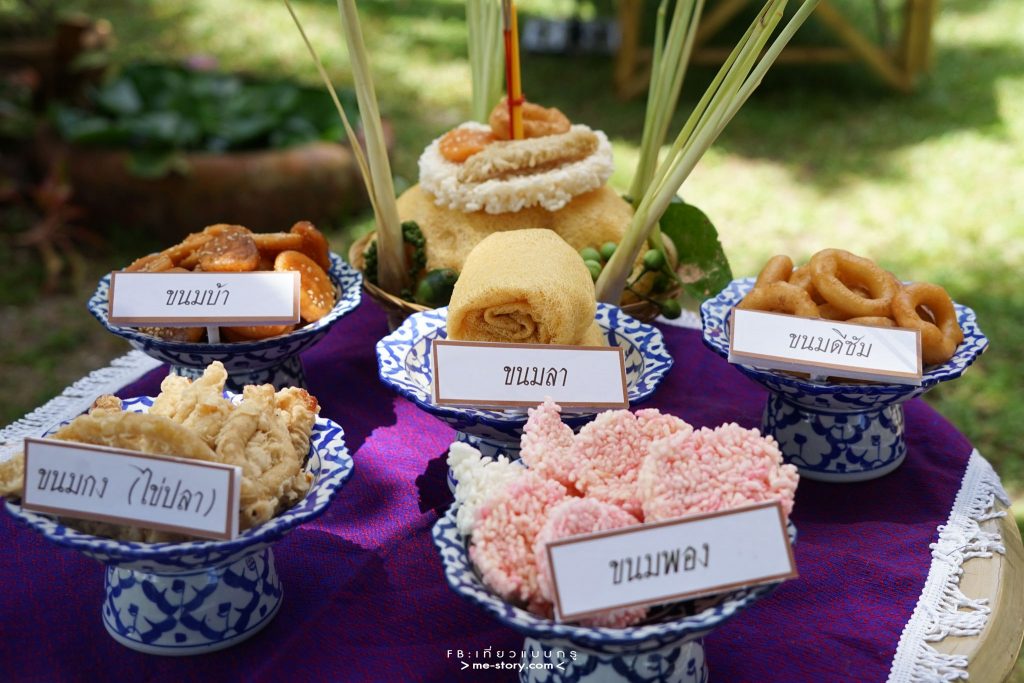
(Photo Credit: me-story.com)
In some areas, locals also offer these sweets as offerings to guardian spirits, such as Phra Mae Phosop (the goddess of rice and grains) and Phi Na (spirit of rice fields). The offerings can be seen in the fields or on tree branches.
There are also other snacks depending on the popularity in each locality. On the day of the main event, villagers will offer food and Krayasart to monks in the village temple, hear Buddhist sermons, and vow to observe the Five Buddhist Precepts (refrain from killing, stealing, committing sexual misconduct, telling lies, and abusing intoxicating substances). These sweetmeats are also gifts exchanged among neighbors and relatives.
Purpose and Values
The noble purpose of the Tenth Month Tradition or Sart Duen Sip is to return the debt of gratitude and show respect to those who have been benevolent to us, not only our deceased ancestors but also nature and the land. This is the value that all Thais uphold and instill in younger generations.
If this tradition is viewed as a moral lesson in disguise, we could say that preta is involved in the ritual to teach people to behave to be afraid of committing evil deeds; otherwise, they will suffer like the in hell later on. Furthermore, it teaches people to be kind even toward sinners like pretas. This is the key to peaceful social coexistence: to be constantly reminded of sin, gratitude, and mercy.
The ritual also strengthens the connection between people and nature. Thailand is an agricultural society and the main occupation of the population is farming. In the tenth month, the rice plants are becoming golden yellow, thriving, waiting to soon be harvested. During this period, villagers will have plenty of time on hands to organize merit making ceremonies and pay respect to gods and goddesses of nature in return for their mercy in nurturing the rice seedlings and producing great yields.
As Buddhists, Thais take this tradition as an opportunity to provide processed food and agricultural produce to monks to guarantee enough supplies during the period of Lent. Finally, this ritual brings joy and strengthens solidarity among the people of the community.
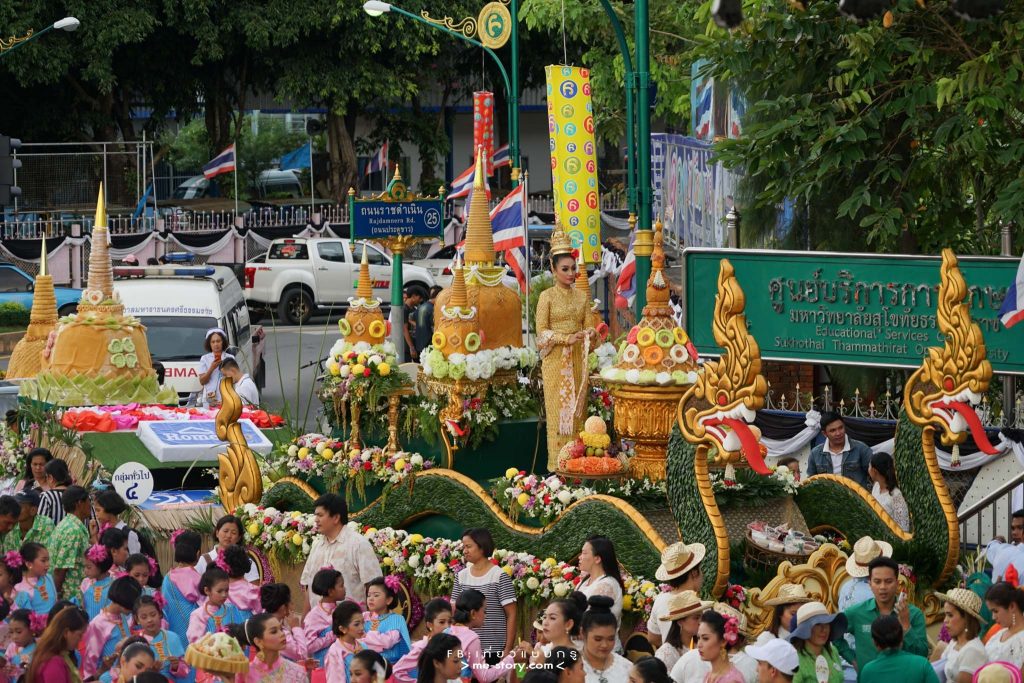
(Photo Credit: me-story.com)
Sources:
- https://www.prachachat.net/general/news-776547
- https://www.m-culture.go.th/nakhonsrithammarat/ewt_news.php?nid=658&filename=index
__________________________________________________________________________________________
Author: Soonyata Mianlamai
26 September 2022


